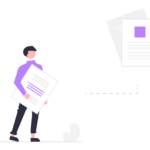Why is it important to engage a team in journey mapping? Marie Kolie, Customer Success Manager at Taikonauten, answered this question and shared her insights and strategies on how to engage the team at our recent webinar. Read on to learn all the details.
Event recording
Wanna learn everything directly from Marie? Then don't miss the opportunity to watch the event recording we have:
Contents
Journey mapping as an essential part of the customer journey mindset
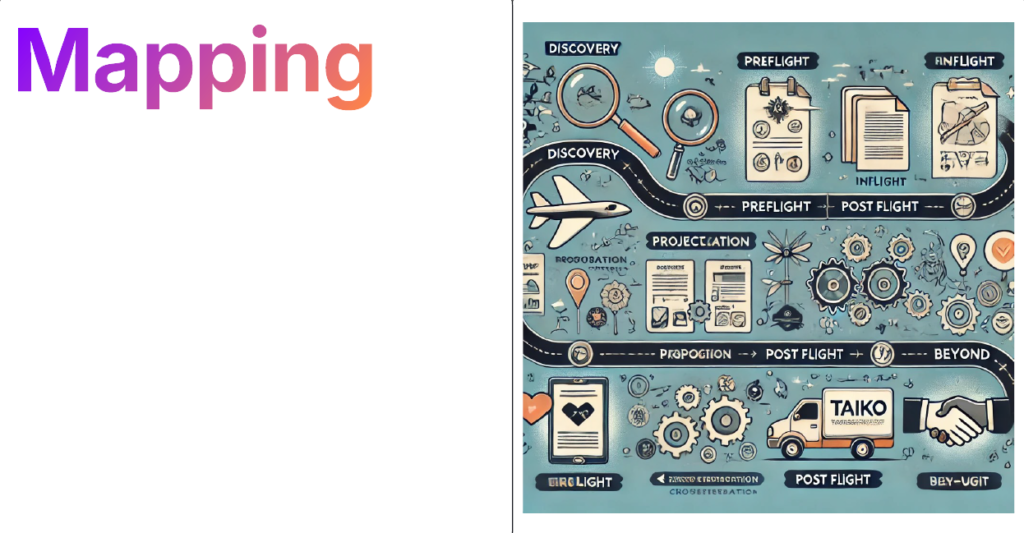
Mapping a customer journey involves documenting the customer experience over various stages, with the end result usually represented as a table.
There are at least five key phases in every customer journey: awareness, consideration, conversion, retention, and advocacy.
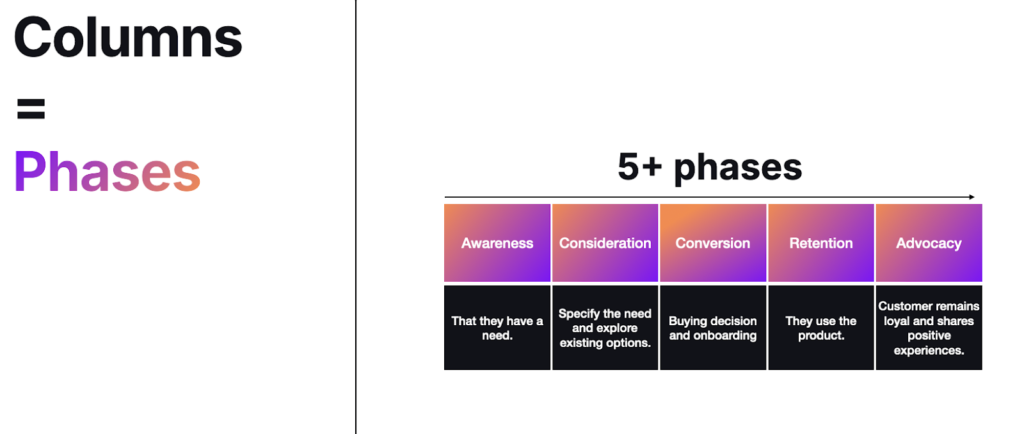
- Awareness
During the awareness stage, potential customers become aware of a need for a product or service. At this point, there is no direct contact with the lead; they are simply recognizing their need. This phase is often initiated by targeted marketing. You want your target segment to realize that they need the social status, comfort, taste, or whatever value proposition you have.
- Consideration
In the consideration phase, the lead actively researches their need, specifying what they are looking for and exploring available options. If your company didn't initiate the need in the awareness stage, this is where it aims to appear on the customer's radar at the latest, ensuring their product or service is considered a viable option.
- Conversion
The conversion stage is crucial, as this is where the buying decision is made. Customers decide to purchase a particular product or service, marking the transition from potential lead to actual customer.
- Retention
After the purchase, the retention phase begins. This is where customers start to use the product or service, forming their real experience with it. Depending on the product, this phase can have several sub-phases. For example, in an IKEA online shop, retention might include delivery, assembly, and decoration.
- Advocacy
In the advocacy stage, satisfied customers ideally remain loyal and share their positive experiences with others. They become advocates for the brand, promoting it through word of mouth.
Detailed mapping
Every phase can contain multiple sub-phases that provide more detail.
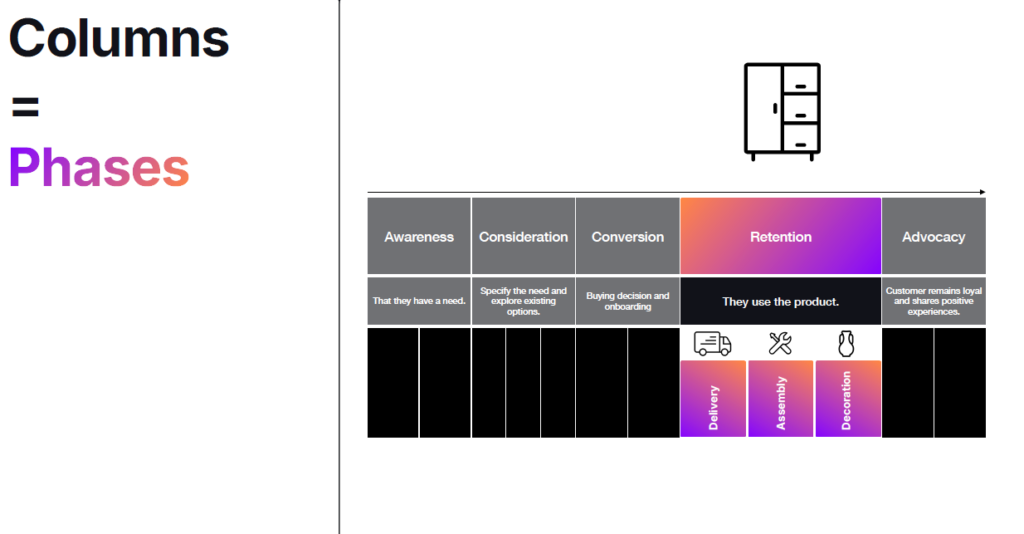
To map a customer journey effectively, it's essential to focus on the roles or happenings within each phase. This includes:
- Touchpoints: Points where customers interact with your company and its products or service.
- Expectations and needs: What customers are looking for and what they hope to achieve.
- Pains and opportunities: Potential challenges customers face and opportunities to delight them.
- Risks and success KPIs: Possible disappointments and key performance indicators for success.
These elements create the customer experience, guiding improvements and ensuring a positive journey from initial discovery to advocacy. Mapping the customer journey helps businesses understand and enhance each interaction, leading to better customer satisfaction and loyalty.
A closer look at the journey mindset
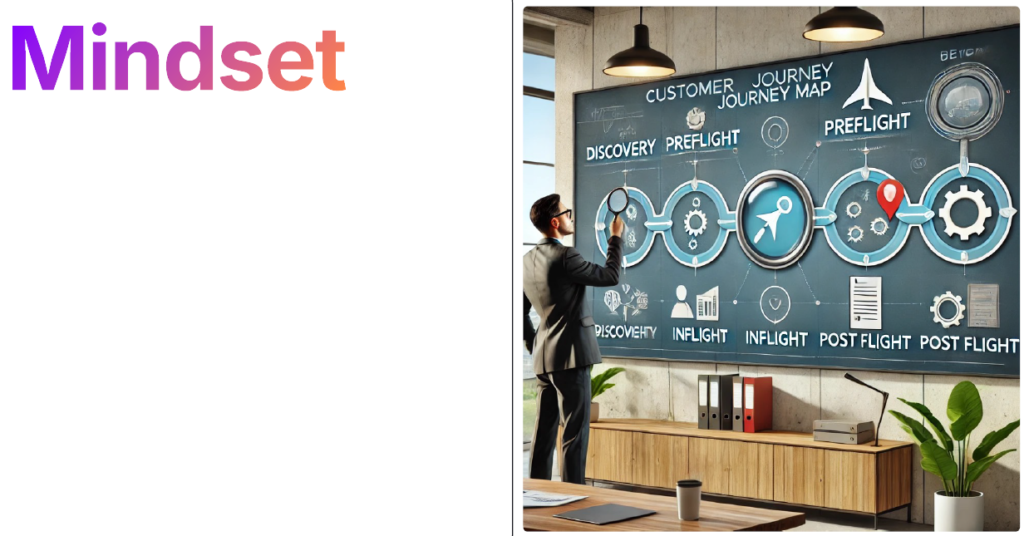
A journey map is a dynamic tool that helps businesses understand and enhance the customer experience. It's about using the map effectively to delve into the mindset of customers, understand their expectations and feelings, and identify opportunities and gaps. Continuously updating the map ensures alignment with evolving customer needs, focusing on meeting and exceeding their expectations with the right content, product, and attitude.
The primary reason for mapping the customer journey is to benefit the customer by creating more engaging and satisfying experiences. This customer-centric approach keeps the customer at the heart of all business activities, ensuring a smooth and enjoyable journey.
For the company, mapping the customer journey provides invaluable insights into behavior patterns, preferences, and habits, enabling more targeted and effective marketing strategies. Gathering data and feedback helps refine products and services, leading to better decision-making, increased customer satisfaction, and higher business success.
A customer journey map also benefits the team by clarifying what truly matters to the customer, reducing non-essential activities, and improving efficiency. Feeling empowered and seeing the impact of their work boosts employee morale and motivation, leading to greater job satisfaction and a sense of accomplishment.

Understanding the entire customer journey holistically is crucial for everyone. Often, only those directly involved in customer experience have a comprehensive view, while others focus on specific touchpoints, working within silos. A holistic approach is essential for a seamless customer experience.
Take Blossom Boulevard, an online flower delivery service. Dan, a delivery driver, realized his role was just one part of the customer journey. Sharing his insights with Marjorie in marketing helped create a campaign addressing customer nervousness, improving the overall experience.
Collaborating across different phases of the customer journey enhances the customer experience, improves problem-solving, and fosters innovative solutions. Consistent messaging builds trust and reinforces the brand image, while better data utilization reduces duplicated efforts.
A holistic understanding fosters a strong company culture, empowering employees and aligning them with the company’s goals. However, challenges include varying customer needs, siloed teams, miscommunication, misaligned priorities, and a lack of training and awareness.
Marie's approach to establishing a customer journey mindset
Establishing a customer journey mindset throughout an entire company requires intentional effort and a strategic approach. At Taikonauten, this process involves uniting three distinct communities:
- creators (designers, UX, and UI professionals);
- engineers (people who develop the products);
- operators (project managers handling internal workflows).
To foster a unified understanding of the customer journey across these groups, Marie employs three key methods:
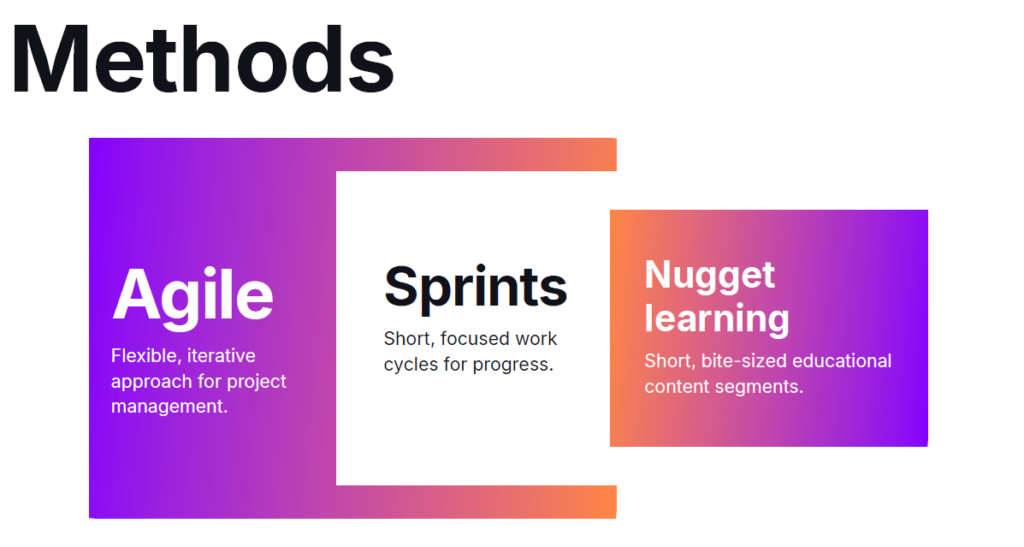
Agile methodology is foundational to this process. This approach emphasizes flexibility and iterative project management. Implementing a customer journey mindset is a significant project that benefits from Agile's adaptable framework. By staying flexible, continually testing what works, and discarding what doesn't, the team can remain responsive to new insights and evolving needs. Agile's iterative nature allows for continuous improvement and adjustment, essential for embedding a customer-centric mindset.
Sprints—short, focused work cycles aimed at achieving specific goals help break down the overarching objective into manageable tasks. That prevents overwhelming the team and ensures steady progress. Each sprint focuses on a single goal, allowing the team to build on each success progressively. As a result, the team can concentrate on one aspect at a time, creating a more structured and effective approach to instilling the journey mindset.
The third method, nugget learning, addresses the challenge of limited time. Expecting employees to dedicate an entire day each week to customer journey training is unrealistic amidst their daily responsibilities. Instead, Marie integrates short, bite-sized educational segments into their regular workflow. These manageable chunks of learning make it easier for employees to absorb and apply new knowledge without disrupting their routines. Nugget learning ensures that the customer journey mindset is gradually and consistently reinforced, making the learning process more practical and less intrusive.
Sprint goals
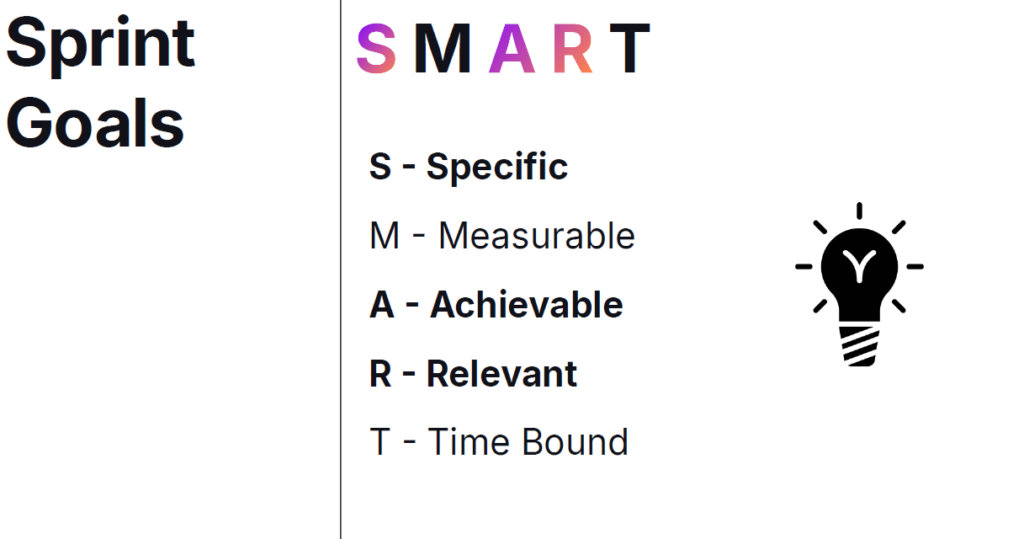
Defining sprint goals is a crucial part of establishing a customer journey mindset. To do this effectively, also employ the SMART method, focusing on Specific, Achievable, and Relevant criteria. Integrate the Measurable and Time-bound aspects within the content and overall plan.
Specific goals require a clear understanding of what you want to accomplish and why. It's essential to define these goals in as much detail as possible to provide a concrete direction for the team. This specificity helps ensure that everyone is aligned and understands the exact objectives.
Achievability is another critical component. Goals must be realistic and attainable, considering the resources and skills available. Setting achievable goals prevents disappointment and keeps the team motivated. It's important to balance ambition with practicality, ensuring that the team can realistically meet the objectives with the resources at hand.
Relevance is about ensuring that the goals directly improve the customer experience. Whether it's enhancing execution, deepening understanding, or addressing specific aspects of the customer journey, goals must be relevant to the overall aim of creating a better customer experience. This relevance guarantees that every effort made contributes meaningfully to the end goal.
While measuring success is always a priority, some goals related to establishing a customer journey mindset can be abstract. For example, understanding customer emotions and experiences may not lend itself to straightforward measurement. Instead of relying on intense quizzes or metrics that feel like extra work, it's important to integrate assessments subtly and meaningfully into the learning process. This approach helps gauge understanding without overwhelming the team.
Time-bound elements are also critical, even if they are somewhat flexible. Having a timeline provides structure and urgency, but it's also important to be ready to iterate as needed. If the team needs more time to fully grasp the concepts, it's better to extend the sprint slightly than to rush through it. Patience is key, as learning and adopting a new mindset is a gradual process.
Sprint content
So, what should sprints look like?
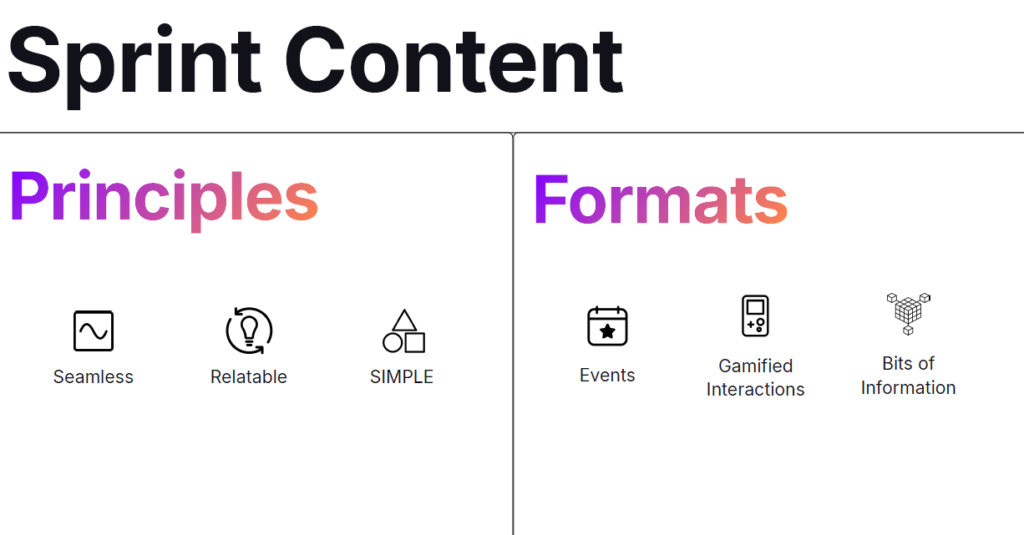
Sprint content principles
- Seamless integration: The content should be smoothly incorporated into the daily routines of team members, making it accessible and easy to digest.
- Relatability: The content should be directly relevant to the employees’ roles, helping them understand their impact on the customer experience.
- Simplicity: Keeping the content simple ensures clarity and prevents overwhelming the team with complexity.
Content formats
- Events: Use existing meetings to introduce and discuss customer journey topics.
- Gamified interactions: Incorporate quizzes and interactive elements to make learning fun and engaging.
- Bits of information: Place bits of information over channels and over a time period. Small bits are easier to digest than a big chunk.
- Example: The journey has 5 main phases. Explain 1 phase per week or day and not all of them at once.
Below are three examples illustrating this approach.
Sprint examples
Sprint 1: Understanding the customer journey
Goal
To understand that the customer journey is an experience comprising various phases, goals, and pains.
Content pieces
- Launch meeting:
- Use Simon Sinek’s "Start with Why" to frame the initiative, emphasizing why the customer journey matters.
- Present the phases, customer goals, pains, and business goals without going too deep.
- Include an interactive exercise using a pre-written script based on a customer profile to engage employees in improving the customer experience.
- Success KPIs: Attendance, feedback on the usefulness of the customer journey, and download rates of the journey document.
- Printout:
- Create a visual representation of the customer journey and place it in prominent office locations.
- Include QR codes with audio descriptions of each phase for easy access.
- Success KPIs: QR code scans and engagement with the content as conversation starters.
- Puzzle Challenge:
- Reuse existing meetings to conduct a puzzle challenge where employees arrange pieces of the customer journey in the correct order.
- Success KPIs: Participation rates and the accuracy of the completed puzzles.
Sprint 2: Recognizing their role in creating the experience
Goal
To make team members aware that they are responsible for creating the customer journey daily.
Content pieces
- Evaluation:
- Conduct a simple red, yellow, or green evaluation of performance in each phase of the journey.
- Make it semi-anonymous to ensure honest feedback.
- Success KPIs: Participation rates and insights gained from the evaluations.
- Experience punch cards:
- Provide punch cards for employees to record positive impacts they observe or create during customer interactions.
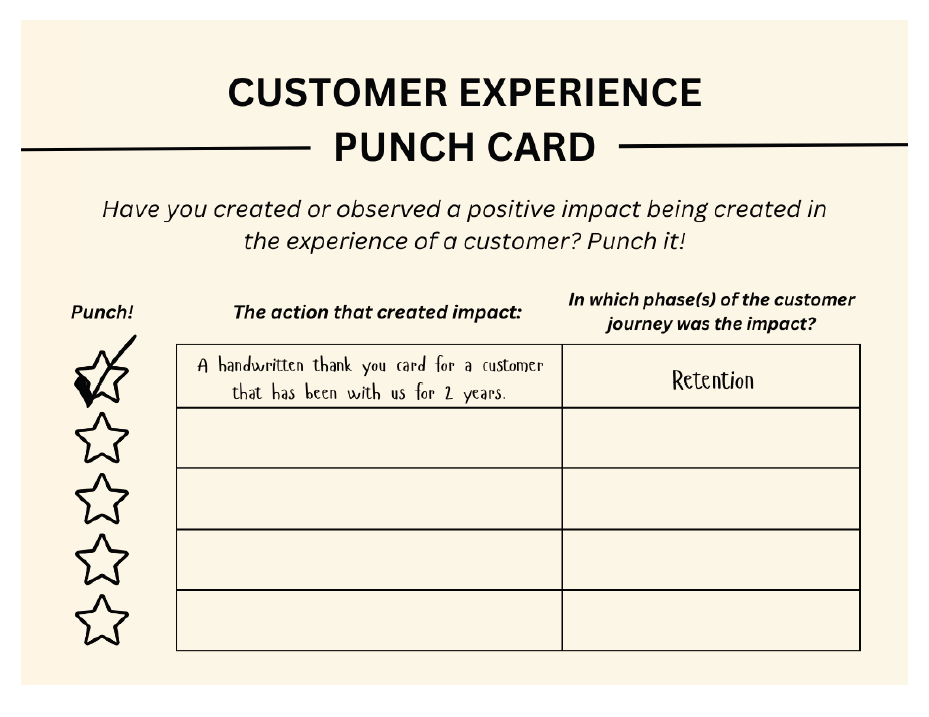
- Offer small rewards for participation to encourage engagement.
- Success KPIs: Participation and the quality of recorded observations.
- Reflection on mistakes:
- Use weekly meetings to encourage reflection on mistakes and their impact on the customer experience.
- Success KPIs: Quality of reflections and insights generated.
Sprint 3: Identifying and supporting improvement opportunities
Goal
To identify and support low-hanging opportunities for improving the customer experience.
Content pieces
- Deep dive into the journey:
- Conduct an in-depth analysis using both quantitative and qualitative insights to identify areas for improvement.
- Keep surveys short and integrated into regular communication channels.
- Success KPIs: Participation rates and the quality of insights.
- Idea boxes:
- Place idea boxes in strategic locations for employees to submit suggestions anonymously.
- Use monthly themes or customer pains as prompts.
- Success KPIs: Number of ideas submitted and quality of suggestions.
- Customer experience coffee chats:
- Pair employees from different departments for monthly coffee meetings to discuss customer journey insights.
- Provide a conducive setting and icebreaker questions to facilitate discussion.
- Success KPIs: Participation rates, quality of ideas generated, and feedback from participants.
This approach to establishing a customer journey mindset involves a strategic blend of seamless integration, relatability, and simplicity in content delivery. Through structured sprints and engaging formats, the goal is to foster a deep understanding and commitment to enhancing the customer experience across all teams.
Wrapping up
Empowering teams with a customer journey mindset is not just a strategic initiative; it is a transformative approach that aligns the entire company towards a common goal of enhancing customer experience. Through methods shared by Marie Kolié’s, we see that establishing this mindset requires deliberate effort, a blend of effective principles, and engaging formats.
Key takeaways:
- Seamless integration: Incorporating customer journey content into daily routines ensures accessibility and continuous learning without overwhelming the team.
- Relatability and simplicity: Using relevant examples and keeping content straightforward helps employees understand their roles in creating the customer experience, making the learning process more effective.
- Agile methodology: Adopting an iterative approach with short, focused sprints allows teams to gradually build their understanding and application of the customer journey mindset.
- Engaging formats: Utilizing existing meetings, gamified interactions, and bite-sized learning segments makes the content more enjoyable and easier to absorb.
- Collaborative insights: Encouraging cross-departmental collaboration fosters a holistic understanding of the customer journey, leading to enhanced problem-solving and innovative solutions.
- Continuous improvement: Regularly updating the customer journey map and integrating feedback ensures that the company stays aligned with evolving customer needs and expectations.
About the speaker

Marie Kolie is a Customer Success Manager at Taikonauten GmbH in Berlin, where she aims to create the perfect customer experience.
Marie has nine years of experience in international companies in various business areas and an MSc in Digital Marketing and Data Science from EM-Lyon Business School.
With a background in customer insights, product management and strategic marketing, she acts as a bridge between internal teams and customers, utilizing data-driven strategies to improve business outcomes.
Marie is happy to do consultancies for customer experience enhancement, journey mapping and the use of data to enhance the customer experience.


